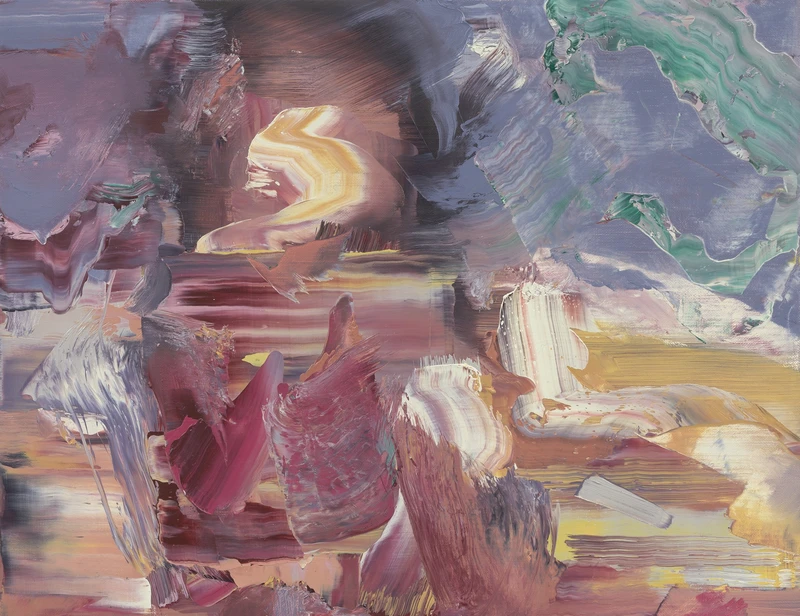Richard Patterson
11 Mar-15 Apr 2023


Timothy Taylor is pleased to present a new exhibition of abstract paintings by Richard Patterson (b. 1963, Leatherhead, Surrey).
Only Fans consists of thirteen small-scale paintings that draw the viewer into a bravado performance of gestural painting, a return to the essential. Milky celadon streaks across linen canvases, a carnal palette of rose and ochre in glistening impasto that is, in one sense, a rejection of digital imagery and embrace of the physical, the passionate, the hard work of heartfelt painting. Yet Patterson’s evocation of primal sensuality is wrapped in layers of alienation that also suggest the numbing effects of searching for status and sexuality online.
While the shapes of lost loves have recurred in Patterson’s work since the nineties, here her image is bound in the paradox of virtual reality: a repository of longing and distance. Patterson originally rose to fame as a Young British Artist in the 1990s, with Damien Hirst and others, for his polished, ironic style of photorealist paintings, which glossed on postmodern consumption and Gen X nihilism by recreating kitsch photographs and advertisements. Yet while earlier works reflected the spectacle of mass-produced images, in the tradition of Richard Hamilton and Gerhard Richter, Patterson’s new abstractions suggest that we have already been colonised by digital technology.
Shadows of women appear amid abstract swirls. In Way Hey and Up she Rises (2022), the rosy outline of a lounging woman might refer to Gustave Courbet’s The Woman in the Waves (1868). ‘What I’m really trying to do is create a highly controlled situation in which something uncontrolled happens,’ Patterson notes of his energetic painting process, which sees him paint wet-into-wet for up to ten hours at a time. The sublimated images of women recall Willem de Kooning’s late abstract paintings of swooping pink and blue curves, as if, Patterson suggests, the shape of the artist’s wife Elaine was burned into his mind.
In contrast, the ghostly outlines of Patterson’s female figures allude to the anonymity of data as much as the passion of the body. OnlyFan (2022), a tongue-in-cheek reference to the online porn website OnlyFans, sees the arched backside of a woman rise in a whirlpool of brushstrokes. ‘We become composites of data more than organic human beings,’ Patterson says. ‘The new world order is here. If life is lived online, even sex becomes a proxy for the thing it once was, an imitation of reality to be recorded and uploaded. It becomes an advert for something that never happened. My paintings are the opposite. They’re visceral, performative, concrete.’